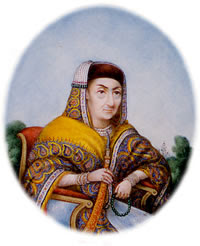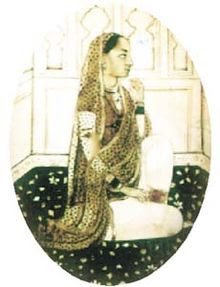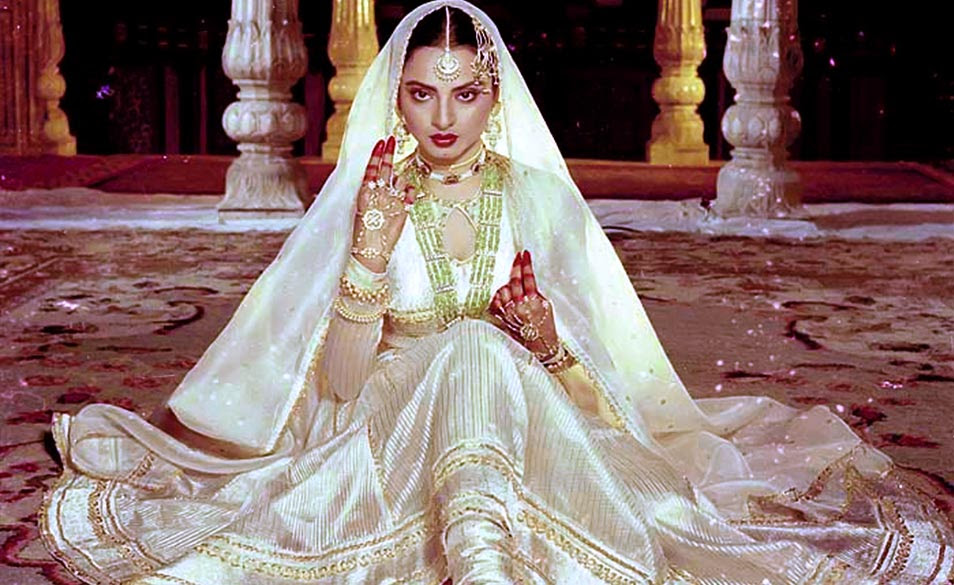The Tawaifs of Lucknow an exemplary Culture
There are a few important terms that must be understood. In particular, we must be familiar with the terms “tawaif”, “nautch”, “Kotha”, and “devdasi”.
The word “tawaif” is a word rich with emotional connotations. The term “tawaif” is the plural form of the Arabic “Taifa”, and as such meant “group”. Today the term has become synonymous with a prostitute. Unfortunately, this is an extreme corruption of the word, and not at all a reflection of this once noble institution.
The tawaifs were female entertainers. They were in many ways similar to the geishas of Japan. They excelled in the arts of poetry, music, dancing, singing, and were often considered to be the authority on etiquette. By the 18th century, they had become a central element in polite, refined north Indian culture. However, their sphere of entertainment also included entertainment of the more erotic variety; it was the latter activity that contributed to their downfall.
“Nautch” is another term that needs to be discussed. Nautch is an anglicised form of the Urdu/ Hindi “nach”, which is derived from the term “nachna” which means “to dance”. However, since the 19th century, the term “nautch-girl”, “nach-wali”, or “nautch-wali”, has been applied to tawaifs and devadasis. For this article, we will attempt to concern ourselves only with the tawaif. Please also note that for these articles we will be using the Victorian English corruption “natch” instead of the more current and academically acceptable “nach”. This is done to maintain the Victorian feel.
The confusion of “tawaif” with “nautch-wali” is due to a mixture of ignorance and half-truths. It is correct that dance was a major portion of the tawaif’s accomplishments but every tawaif was not necessarily an expert in dance, nor was every dancing girl necessarily a tawaif. Still, from the standpoint of the zealots who were engaged in the anti-nautch movement, the terms all represented a prostitute.
Marginally related to the tawaif was the “devdasi”. The term “devdasi” literally means “a female servant of God”. The devadasis were girls who were attached to the temples. It is important to remember that there was virtually no connection between the devadasis and the tawaifs.
Finally, the term “Kotha” should be examined. The word Kotha implies a multi-storied house or mansion, specifically one which is built with bricks or stone. The implication was that it was the place where the tawaifs lived. However, it assumed a different significance. One sometimes to encounter the phrase “Kotha culture”, which encompasses the entire culture of the tawaif; this includes the entire circle of patrons, poets, musicians, and artists. The word “Kotha” is linguistically linked to the word Kothari (literally a small Kotha or a cottage), and Kothi (a mansion). It is also interesting to note that from an architectural standpoint, “Kotha” and “Kothi” mean the same thing; however, the word “Kothi” often invokes the connotation of a bank or a royal dwelling and seems to have no connection with the tawaifs.

The Tawaifs at their Pinnacle
The zenith of the tawaif is hard to pinpoint. It probably was around the end of the 18th century or beginning of the 19th century. It was during this period that there were a large number of autonomous kingdoms left over from the collapse of the Mogul empire. These autonomous kingdoms were an essential component of the tawaif tradition because they provided the patronage that the tawaifs required. In return for financial support, the tawaifs maintained the art and culture of the area.
Activities
There were a number of activities in which the tawaifs excelled. They specialized in singing, dancing, poetry, and the erotic arts. Furthermore, they were considered to be the absolute authorities on etiquette and the social graces. Since they were freed from many of the mundane duties of ordinary women, they were able to elevate these artistic activities to levels that most men could never attain. It was normal for nobility to send their children to the tawaifs to be instructed in the arts and letters.
The tawaifs were considered to be the originators, or at least the popularisers, of several art-forms. For instance, the vocal forms of the Dadra, ghazal, and Thumri were a speciality for them. The Kathak form of dance is also inextricably linked to the tawaif; this highly rhythmic, and at times an abstract form of dance, has been popular in northern Indian for centuries.
There were also areas that they generally did not delve in. Obviously, menial work was out of the question. But it is interesting to note the musical fields in which they seldom indulged. Although they would occasionally play musical instruments, being an accompanist was beneath their dignity. They would usually hire men to play the accompanying instruments such as tabla and sarangi; the status of these musicians was definitely that of “hired help”. (Please note that we do not make any mention of the harmonium. This was not invented until the second quarter of the 19th century, so we will discuss this later.)
The dignity of the tawaif may have prevented her from stooping to lowly professions such as playing musical instruments, but their dignity empowered them at times to acquire massive wealth, political power, and even military might.

This will be illustrated as we take a brief look at some famous tawaifs.
A Few Famous Tawaifs
The accomplishments of many of the tawaifs would be the subject of a whole book. Obviously we are unable to give a full treatment to the subject here, however, a cursory overview of some famous tawaifs will give an indication of the great heights to which many of them attained.


Umrao Jaan – It is impossible to discuss the tawaifs without mentioning Umrao Jaan of Lucknow. Unfortunately, the various films and novels have taken such artistic liberties with her life, that she exists more as a legend than an actual person. We know for sure that a tawaif by the name of Umrao Jaan existed, but that is about all that we can be certain of. The only details of her life come through the “Umra-o-Jaan-e-Ada”; this was a novel written in 1905 by Mirza Mohammed Hadi Ruswa. Undoubtedly artistic liberties were taken in the book, with the result that we are just unable to tell fact from fiction. Therefore it is probably better if we exclude her from our discussions here.
Final Overview of the Tawaif
When everything is considered about the tawaif, an interesting picture emerges. The tawaifs had options open to them that were generally denied women of a domestic nature. If they had professional aspirations, especially in the artistic fields, they had a virtual monopoly. If they desired to settle down, marriage was always an option. From what we know of history when this option was taken it was often with only the wealthiest and most well-placed men. Remember their mastery of etiquette and the social graces made the tawaifs a “prize catch”, for almost any man. If they desired an independent lifestyle, this too was an option which the tawaif could exercise that was denied most women of the period. This is born out by an examination of tax rolls that tend to show only tawaifs as female property owners and tax payers. The tawaifs were often poets and authors, in a period when the majority of women were illiterate. When everything was considered, the tawaifs had, education, independence, money, power, and self-determination, in a period when many women were little more than cattle.
Edited by Adam Rizvi





